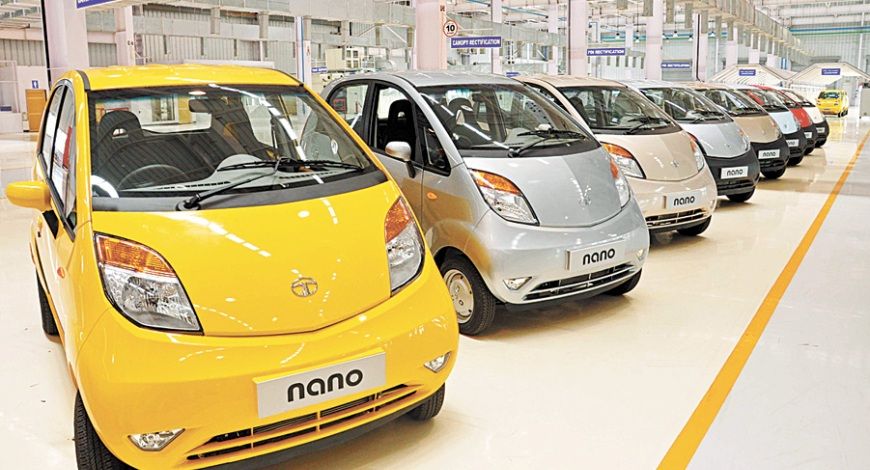Introduction
In your mind’s eye, picture a vehicle that could reach the hands of millions because of its simplicity and affordability. That is what the Tata Nano did for the automobile industry. It was projected to be the world’s cheapest vehicle and was cherished as the ‘people’s car.’
The Nano was not just another contestant in the race of automobiles. It had in mind the purpose of transforming accessibility to transportation, especially in the country of India where it gained initial momentum. But what was the behind this dream project, and what caused it to create such a wave in the automobile sector? This blog will guide you through the creation, features, problems, and legacy of the Tata Nano.
History and Background
Tata Nano’s vision was to grant financial mobility to the families who were unable to afford otherwise expensive automobiles. Ratan Tata, who is the founder of Tata Motors, is famously known for coming up with the Tata Nano after witnessing a family of four riding a scooter in heavy Indian traffic.
It’s 2008, and the Nano was born into this world with a driving price tag of $2000, making it the most economical option in the automobile market. This cheap price wasn’t by mere coincidence. It was due to a smart deployment of lean production techniques, novel designs, and other strategic cost cutting methods.
The starting buyers of automobiles in India are considered highly price sensitive. With this in mind, Tata Motors set out to develop a vehicle that would be contextually priced and tailored to meet their needs.
Initially, The Nano was launched amidst marketing fanfare like no vehicle before it. It was branded as an ‘Engineering marvel’ and billed as a socioeconomic game-changer.
Innovation and Features
In contrast to the abundant modern cars teeming with all the latest technological advancements, the Tata Nano was truly an automobile contrary to all else – it was a simple car that was aimed purely at the masses. All components were stripped to their basics with affordability and practicality as the primary goals,
So, what were some aspects of the Tata Nano that made it so different from the rest? Here are a few:
• Compact Design: The Nano logged in as the perfect sub 3-meter vehicle, and along with its small frame, it was engineered to ease navigation of busy metropolitan roads and tight parking spots.
• Fuel Economy: The car’s fuel efficiency stood at an outstanding 22 km per liter.
• Basic Interior: The Tan no did not provide air conditioning, assisted steering or even power windows in its base model, thus keeping interiors devoid of all luxuries.
• Lightweight Construction: The Nano was equipped with lightweight frames and fuel efficient engines sufficient for proper functionality.
• Low Upkeep: The Repairs and upkeep of the Nano were comparatively far simpler and much more budget-liable than competing models within the same segment.
With time, the company expectations of international masses were furthered and thus, the more advanced models included Air conditioning and increased levels of safety.
Impact on the Automobile Industry
The Nano of Tata was a symbol of the manufacturers dream to provide a car for the common man. It was designed at a price point which shattered the structure of the auto industry; it was proof that mass-market cars did not need to be expensive. While it had its on flaws, it did manage to establish a certain niche of the industry.
1. Affordable Engineering
With the launch of the Nano, preset low cost engineering milestones were achieved. Tata motors single handedly caused the revolution of affordability in the auto industry. The Nano opened the eyes of marketers to the potential of the emerging nations, trying to figure out how to make cars accessible.
2. Shifting Focus to New Market Segments
The consumers targeted by the nano were new and untapped. Motorcycle and scooter owners who had always wished for a car but had never been able to afford. Tata targeted the ‘overcrowded’ two wheelers and replaced it with a much safer alternative that appealed to the masses.
3. Encouraging Braided innovation
The Nano’s very existence encouraged industries beyond the auto section to start adopting the idea of lean designing. It proved how innovation can flourish from constraints.
Challenges of the Tata Nano
Another aspect that restricted the success of the Nano, which had started with a lot of hype was the issue of quality and features aligning with expectations.
1. Importance of cost saving features
To meet the expectations of a price addressed above, Tata motors had to make the automaker compromises.
It has been noted that the first-generation Nano did not have critical elements such as power steering, basic safety features, and even standard air conditioning. Such features are required when competing in the same market with more advanced models.
2. Brand Recognition Blunders
The marketing of Nano has always advertised it as the ‘cheapest’ car in the world. This marketing strategy had an advantage at the start, but with time, it has affected the marketing reputation negatively. There is a belief that low prices translate to low quality products making people reluctant to purchase the Nano.
3. Controversies over Safety Issues
The public safety issues associated with the Nano, including the self igniting of fires within the engine, assisted in damaging the brand reputation. Even if these issues of concern were not common, these raised the problems of public trust and brand value.
4. Problems with Consumer Perception
Even though Tata Motors sought to reach low income earning individuals, many in such categories could not afford even the cheap pricing of the Nano. In addition, the middle class would normally prefer to spend slightly more to acquire better reputation cars with better features.
5. Sales and Production Dips
The production and sale of Tata Nano had reached an all time low by 2018. This was not a problem for only Tata Motors in India, but was also a problem faced when attempting to expand internationally with greater safety and quality regulations.
Legacy and Future Prospects
Even with these problems, the Tata Nano managed to leave a great mark in the automotive industry.
This provoked a debate around the world of affordable mobility and motivated a generation of engineers and car manufacturers to transcend the conventional.
His legacy lives on in the lessons learned about the consumer behavior, marketing, and the ever eluding concept of frugal innovation when Tata Motors decided to retire the Nano.
Is it too far-fetched to think about a future Nano model? The rumor mill suggests that with the EV (electric vehicle) technology boom, Tata might bring back the Nano in the form of an ultra-affordable electric car. With urban mobility solutions becoming a major selling point, the groundwork laid by the Nano could yield some excellent returns in the years to come.
Redefining Affordable Mobility
Once again, the story behind Tata Nano depicts embarrassing ambition, unprecedented innovation, and the meaning of learning the hard way. Although the Nano did not achieve perpetual commercial profits, it did create room for new opportunities in an often neglected target market.
What the Nano demonstrated is that a car is not meant to have an expensive price tag in order to be valuable. The Nano marked a new dawn in automotive history by breaking stereotypes and barriers, and pushing limites.
If you are intrigued by the talks revolving around Tata Nano, feel free to check out more of its innovative narrative on their website: https://guia-automovil.com/2019/08/01/tata-nano



